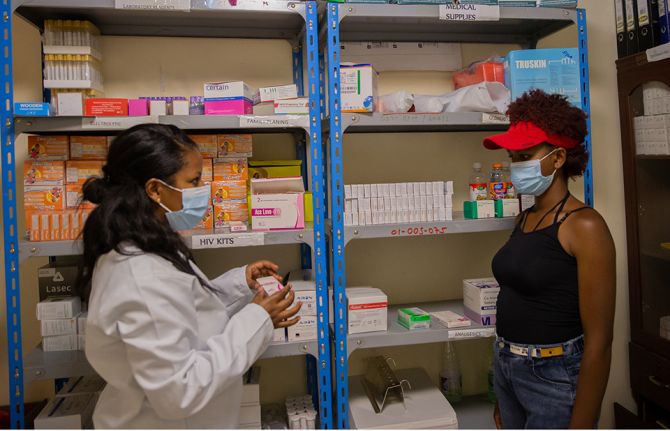
Update
UNAIDS Scientific and Technical Advisory Committee calls for HIV testing revolution
13 April 2017
13 April 2017 13 April 2017The participants of a meeting of the UNAIDS Scientific and Technical Advisory Committee (STAC) have called on UNAIDS to lead global efforts to galvanize an HIV testing revolution. The target is to achieve 90% of people living with HIV knowing their HIV status by 2020. In 2015, only 60% of people living with HIV knew their HIV status.
In a mid-term review of progress towards the 90–90–90 targets, held on 9 and 10 April in Geneva, Switzerland, the participants heard that late HIV diagnosis represents the single greatest barrier to increasing rates of HIV viral suppression globally. New testing technologies have emerged, but programmes must reach the people who need HIV testing services.
Key barriers to HIV testing uptake include lack of individual awareness of risk, stigma, legal and structural barriers, associated costs such as travel to facilities and the perception that there is little benefit from diagnosing HIV infection if no symptoms are present. The participants heard that many people avoid seeking HIV testing services at health facilities, since both travel and waiting times can often be long. Barriers to testing are often experienced by young people, men and members of key populations.
The participants agreed that political and financial support for HIV testing must be significantly increased and that the central focus of HIV testing services should be moved from the health facility to the community. Community workers have a critical role in scaling up these community-centred strategies. The STAC recommended that UNAIDS develop a road map for the HIV testing revolution, for review and comment by the STAC at its next meeting in July.
The STAC recommended that UNAIDS emphasize leveraging the 90–90–90 targets to better link the HIV response to the broader agenda for sustainable health. It was noted that HIV testing services provide a platform for screening for other health problems. Likewise, momentum towards the 90–90–90 targets also offers opportunities to address health workforce shortages.
Quotes
We need to be discontent. Although we have made considerable progress in our response to AIDS, we have much more to do, especially for those who are being left behind.
The HIV testing revolution must be a major element of our agenda. We must do a better job of reaching young men with HIV testing services, and we need to move HIV testing from the facility to the community.
We need to increase the pace of treatment scale-up. We added 2.4 million new people on HIV treatment in 2015, in both 2013 and 2014 the increase was 2.2 million. If we could increase annual enrolment in HIV treatment by 3 million, we could reach our global goal of having 30 million people on HIV treatment by 2020.
The rate of complete viral suppression in the population is the ultimate indication of how well we are doing with 90–90–90. We need to prioritize, ensuring that people on antiretroviral therapy receive viral load monitoring.
If we continue with the current rate of testing in Zimbabwe, that will not get us to the first 90. However, modelling indicates that we can reach the first 90 if we implement new forms of HIV testing, such as HIV self-testing.
Males and younger people have much lower rates of viral suppression in Malawi. Much of that is driven by their lower rates of antiretroviral therapy uptake.



